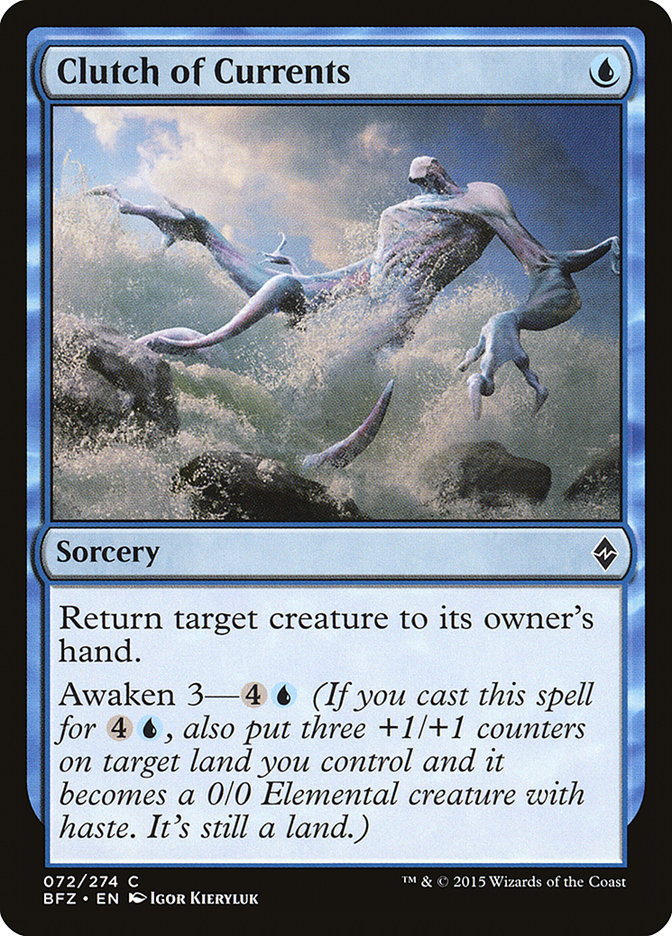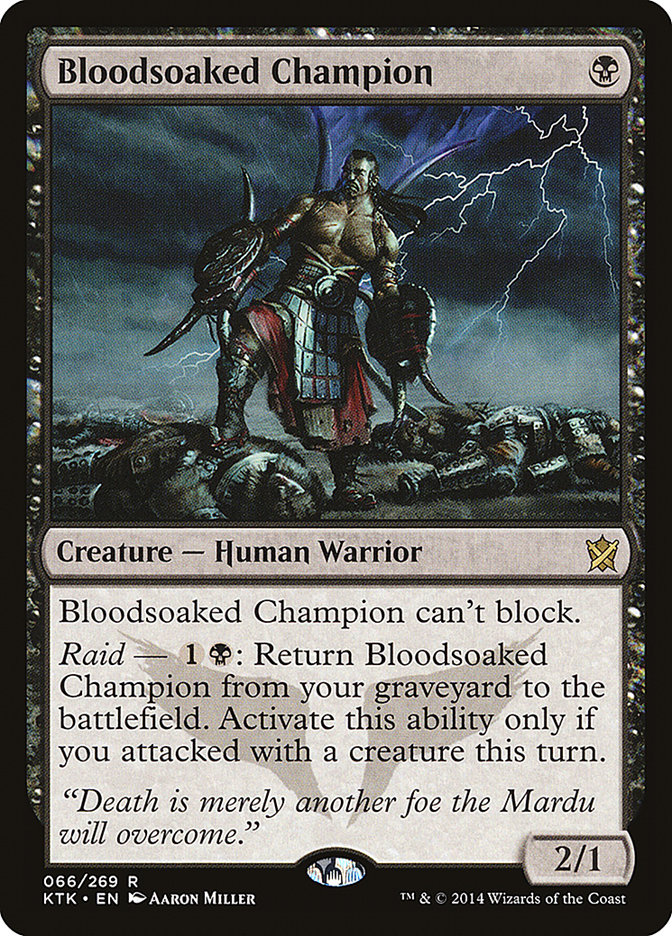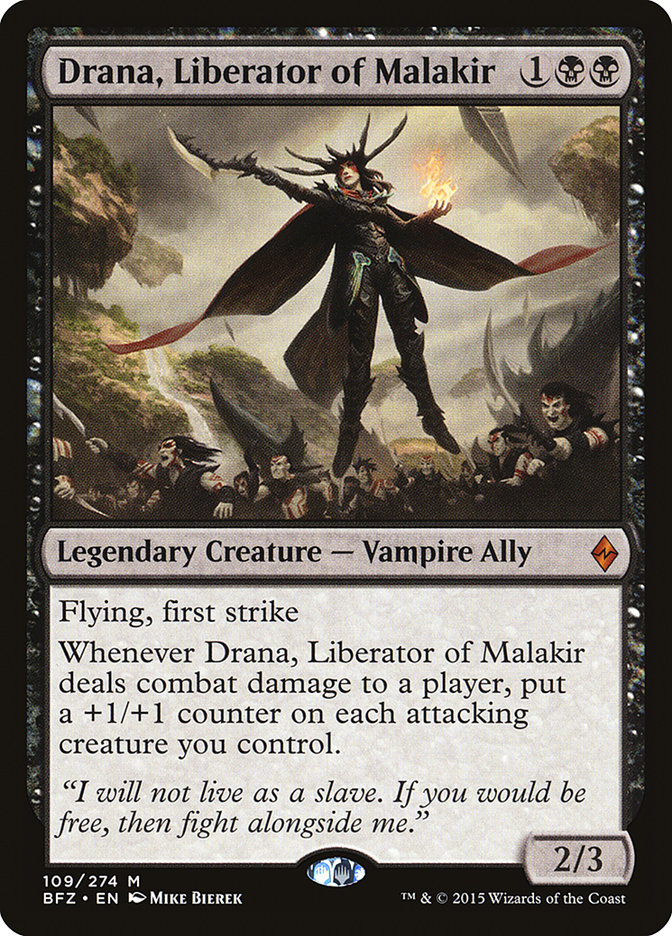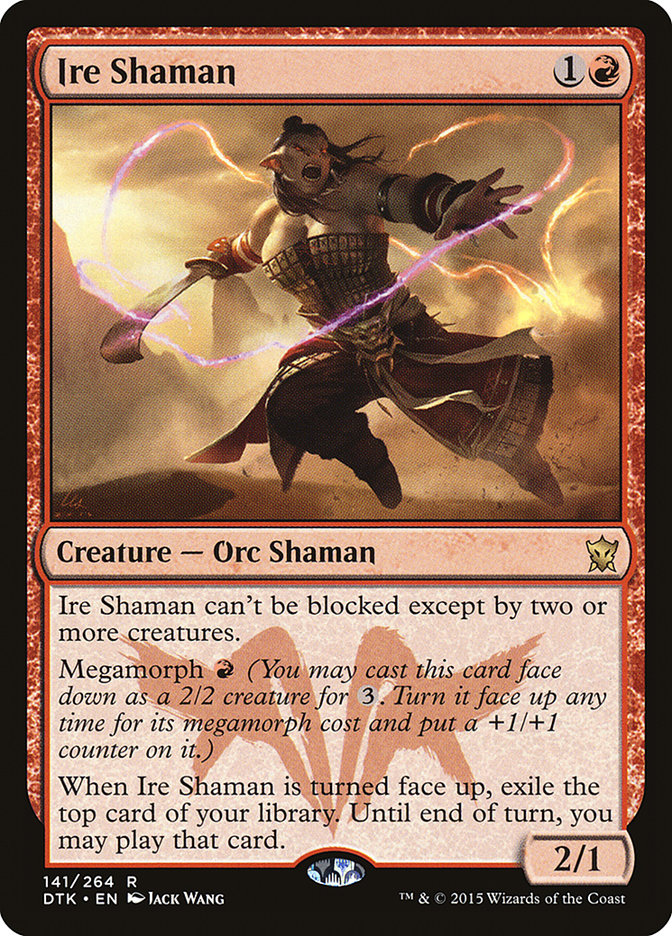For nearly everyone that plays Magic, the deck you choose says a lot about both you as a person and your playstyle. Whether you play aggro, midrange or control, your 75 tells your opponent a little bit about you. In my opinion, a player’s choice of an aggressive strategy means that they like excitement based on linear, sequenced actions that help him or her overpower a slower opponent. Midrange players tend to enjoy their draw step, which often finds a powerful spell or creature that they can use to have a high impact on the game. Control players are often measured, patient players that enjoy the intricacies found in the rules and, literally, controlling the game state.
But what if you prefer tempo? What does that say about you?
Last week, we talked about the format being open enough for you to play whatever you want, and while that’s a little less true now after seeing the wave of Deathmist Raptor and Den Protectors wash over the Top Eight of the SCG Open Series Atlanta event, you’re still pretty clear to do whatever you like. No one archetype is oppressive… yet.
One thing that is clear is that removal is worse than it used to be. Three mana seems to be the hard stop on unconditional (or effectively unconditional) removal these days, and that means that other spells and strategies have a chance to rise up. Tempo, I believe, is one of them.
I’m coming up on three years of writing for StarCityGames.com, and anyone that’s read old stuff of mine knows just how much I love tempo decks.
After getting bruised and beaten at the SCG Open Series in Indianapolis a week ago, my pals and I sat down at our local shop to try and figure out what to do differently. Our discussions on the ride back had changed from “that was rough” to “what if we did this?” very quickly, and while the two of them were locked up quickly on a plan it took me a while to find the card I wanted to work around.
This is not Unsummon. This is not Void Snare. But, it is what we have.
These days, two mana might remove a creature, but that comes with an asterisk. It’s only for a turn perhaps (Disperse), or only if that creature has one color (Ultimate Price). Clutch of Currents doesn’t care; for just one little blue mana you can undo a creature spell for just a turn… and late in the game, you can even attack with a fresh 3/3 haste creature.
Tempo needs efficient (albeit conditional) creatures to leverage temporary board advantage, so I needed to get some efficient threats. Blue didn’t have many, so Clutch and its Islands would be the flash color. This left me landing on one of the format’s premier one-drops: Bloodsoaked Champion.
In this high-land world, the Champion can get underneath even strong starts from your opponent. Casting the Champion on turn one on the play means many opponents either start the game at sixteen life or will be forced to make an unsavory trade down, one which the Champion will find only temporary.
From there, I liked building into high-powered creatures that would work well with a swarmed board of low-power creatures. Smothering Abomination is quite large, really, and its disadvantage can be leveraged to keep you ahead on creatures and spells so that casting Unsummons and the like seems less embarrassing.
Drana, Liberator of Malakir is great at making outclassed creatures relevant again. Moreover, if Drana hits the table, I felt certain that opponents would need to focus her down instead of casting spells and advancing their board, giving me another bit of advantage. One hit from Drana can spell death for an opponent’s combat math or their life total.
So far we were just blue and black, but red is basically a freeroll with the choice to play Bloodstained Mire and its accompanying Battle land. Smothering Marsh you get lots of power in cards like Collateral Damage, Dragon Fodder, and Forerunner of Slaughter, a highly efficient and synergetic attacker. That leaves us here:
Creatures (26)
- 4 Bloodsoaked Champion
- 1 Liliana, Heretical Healer
- 4 Hangarback Walker
- 3 Dominator Drone
- 4 Forerunner of Slaughter
- 3 Smothering Abomination
- 4 Endless One
- 3 Drana, Liberator of Malakir
Lands (24)
Spells (10)

I tried this one out at the shop that night and I loved it. Forerunner of Slaugher was outstanding; it hit really hard for its cost, and the ability to grant haste was exceptional. I’d seen the Forerunner compared to Flinthoof Boar, and I wholeheartedly agree. It’s better, really, but this has got to be the cornerstone of any black/red aggro deck these days. Clutch was amazing, and it was always a card I wanted to draw. Dragon Fodder underperformed a bit, as two 1/1s wasn’t very relevant unless I was already stable and jamming with Smothering Abomination.
After some tweaking, I took it to a one of our Wednesday Night Magic events here in town, a tentative sideboard in hand and a few adjustments to the maindeck.
Creatures (26)
- 4 Bloodsoaked Champion
- 4 Hangarback Walker
- 3 Dominator Drone
- 4 Forerunner of Slaughter
- 3 Smothering Abomination
- 4 Endless One
- 1 Dust Stalker
- 3 Drana, Liberator of Malakir
Lands (23)
Spells (11)
Sideboard

Three rounds to test it out!
In the first round, I played against a solely blue/white control list with Gideon, Ally of Zendikar as the main driver to help the deck not only survive but end the game. In game one he got me in a grindy mess, but game two I outpaced him with lots of cheap creatures and his removal was lacking since he started too far behind. In game three I killed Jace, Vryn’s Prodigy with an Ultimate Price, but then had no answers for his resolved Gideon and it took over the game.
Many of my cards were weak against control, so that’s something to note.
In round two I fought Josh, my Indy travel buddy. He was playing Esper Dragons, and, after losing the first game to him, I scooped during the second game about turn five, disappointed with the deck’s matchup against control. We talked it out and I decided on some changes. I clinched the last round against Abzan, where this deck really shines. Sure, go ahead and stick your Siege Rhino, what do I care! Abzan’s removal is far too inefficient to answer a bunch of small creatures, especially if they also use creatures like Deathmist Raptor and Den Protector.
The deck was still really fun to play, but I had to come to some realizations. First, Hangarback Walker was finally in a deck that it didn’t make better. Despite being flexible, colorless, and value-producing, the Walker was too slow. In most matchups where I played it, it was just an awkward attacker. Because I was against a control matchup for two out of my three rounds and they knew better than to kill it, it was in the red zone more often than not. Sorry, but you ain’t no Hangarback Girl this time. Smothering Abomination was also dangerous against control, as they could remove all of my threats and I’d be left with a sorcery that draw me a card a turn later as a bad spin on Mind Ravel and friends from Ice Age. Not great; if only it were “may sacrifice.” Drana, Liberator of Malakir was awful most of the time, as it never put much of a threat and could be stonewalled by cards like Dragonlord Ojutai. Dominator Drone was OK but not nearly as good as it could have been, and it was super lame by itself. My creatures were often weak and I just needed to hit a little harder to close a game. My mana and the utility land base was also a bit off, now that I was under more pressure to be effective.
That’s a lot of cuts, but at Josh’s suggestion, I decided to move a different direction.
Ire Shaman is hard to block, gives me value, and it interacts with the colorless aspects of the deck I liked. It also was efficient. In fact, most of Grixis’s best megamorphs were efficient. Combined with cards like Herald of Kozilek, I could easily cast and flip a megamorph creature without being off curve. Oh, and Ghostfire Blade also powers these critters up for cheap! Now we’re cooking!
Creatures (27)
- 4 Bloodsoaked Champion
- 3 Grim Haruspex
- 4 Stratus Dancer
- 4 Ire Shaman
- 4 Forerunner of Slaughter
- 3 Herald of Kozilek
- 4 Endless One
- 1 Dust Stalker
Lands (23)
Spells (10)
Sideboard

I tested it this past weekend, and it was both more consistent and sturdier against the format’s big decks like Jeskai with Crackling Doom, Abzan Midrange and even a Bant Control deck I played against. It was able to clinch a majority of games against each opponent and it still felt very tempo-oriented. This, by far, was the most fun and successful list of the three. The morph creatures were all outstanding, and I’m grateful for the recommendation to head that way.
So, if you ask me again, I think that tempo players like to “get” their opponents; they like to lay traps and leverage inexpensive spells into big turns of advantage, either on board or with your opponent’s life total. Tempo players want to analyze threats and roadblocks, study the lines of play, and then use their spells and efficient creatures to undo any advantage your opponents attempt to gain. In short, we are combo players that still let you play Magic, or at least let you feel like you’re playing Magic.
Several of my friends and several readers have brought tempo lists to me. Has a sorcery Unsummon enticed you?





